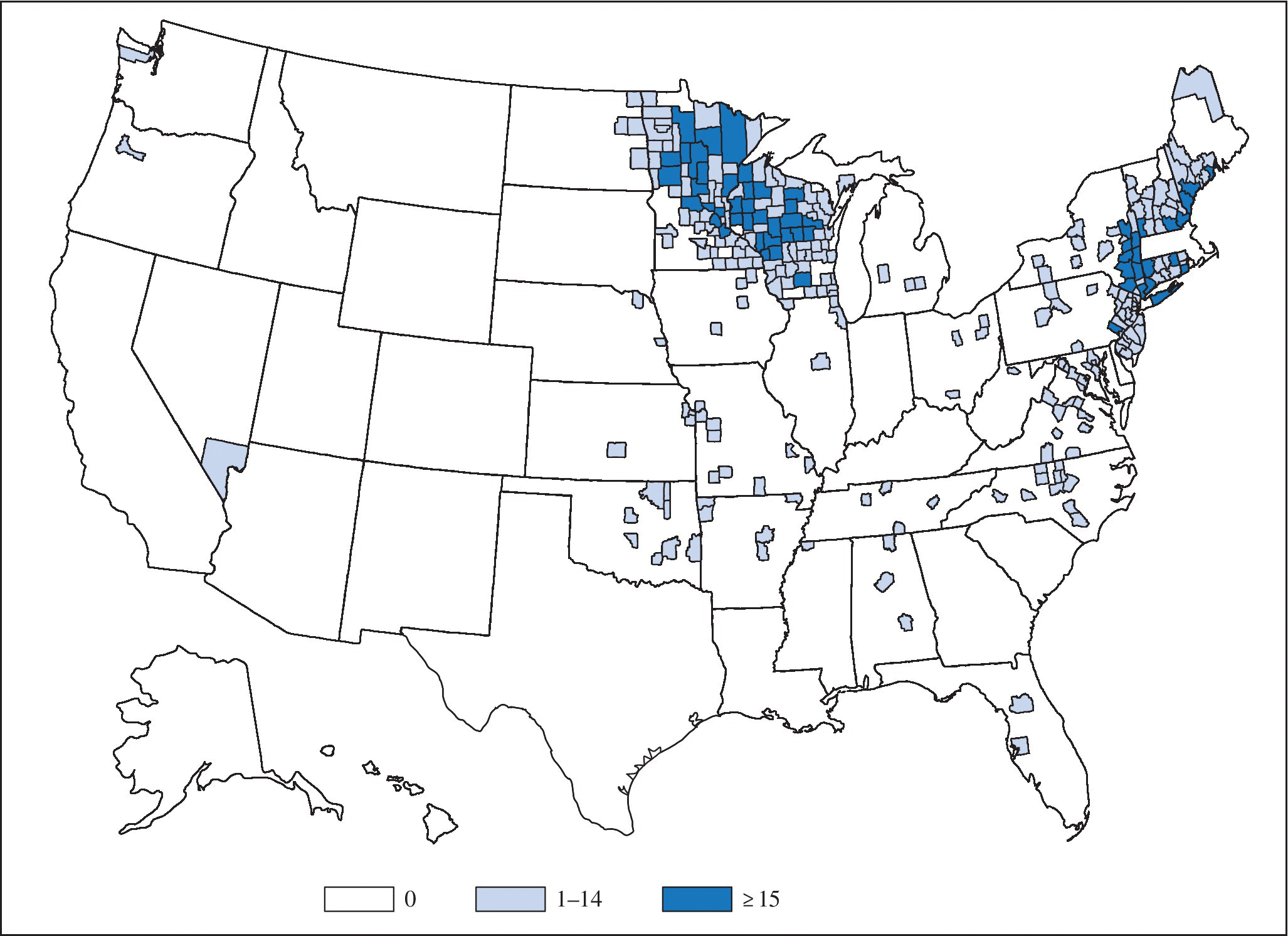Chapter 25ANAPLASMA, CHLAMYDOPHILA, COXIELLA, EHRLICHIA, and RICKETTSIA
Dennis J. Darcey*
Anaplasma, Coxiella, Ehrlichia, and Rickettsia spp. were previously considered as members of the same family but are now considered distinct entities based on genetic analysis. These groups of organisms are bacteria but only grow inside living cells.
ANAPLASMA
Common names for disease: Anaplasmosis, human granulocytic anaplasmosis (HGA), previously described as human granulocytic ehrlichiosis (HGE)
Occupational setting
Ranchers, farmers, foresters, rangers, hunters, lumberjacks, landscapers, outdoor workers, veterinarians, and research and laboratory technicians are at increased risk of exposure.
Exposure (route)
Anaplasma is transmitted to humans by the bite of an infected tick. The blacklegged tick (Ixodes scapularis) is the vector of Anaplasma phagocytophilum in the northeast and upper midwestern United States, and the western blacklegged tick (Ixodes pacificus) is the primary vector in Northern California (Figure 25.1).1 Cases have also been confirmed in several European and Asian countries.

FIGURE 25.1 Map of the United States showing the number of Anaplasma phagocytophilum cases by county in 2012. Cases are reported primarily from the upper Midwest and coastal New England, reflecting both the range of the primary tick vector species, Ixodes scapularis—also known to transmit ...
Get Physical and Biological Hazards of the Workplace, 3rd Edition now with the O’Reilly learning platform.
O’Reilly members experience books, live events, courses curated by job role, and more from O’Reilly and nearly 200 top publishers.

